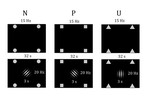The effect of aversive contexts on neurophysiological correlates of fear

Adapting defensive behavior to the characteristics of a threatening situation is a fundamental function of the brain. Particularly, threat imminence plays a major role for the organization of defensive responses. Acute threat prompts phasic physiological responses, which are usually associated with an intense feeling of fear. In contrast, diffuse and potentially threatening situations elicit a sustained state of anxious apprehension. Fear and anxiety are well-established separable emotional states. In this project, we try to elucidate the factors that delineate the boundaries between fear and anxiety. We mainly work with aversive cue and context conditioning paradigms to model aspects of acute and potential threat in the laboratory and to experimentally induce fear and anxiety.
Moreover, fear-eliciting acute danger can be encountered during situations of potential threat or during neutral situations, prompting the question if fear and anxiety are mutually exclusive. If not, what are the mechanisms that characterize their interaction? To test potential interactions of fear and anxiety, we try to develop paradigms that offer new perspectives on healthy and pathological forms of defensive mechanisms.



